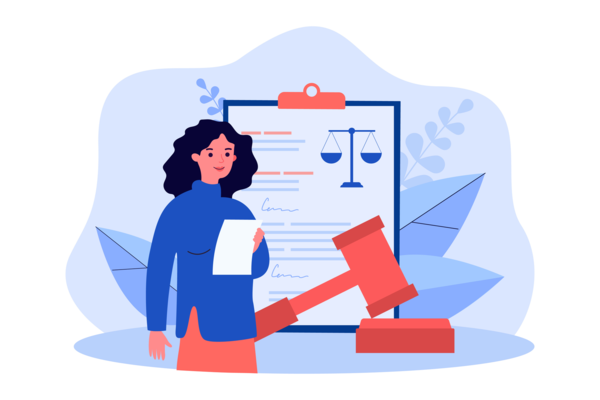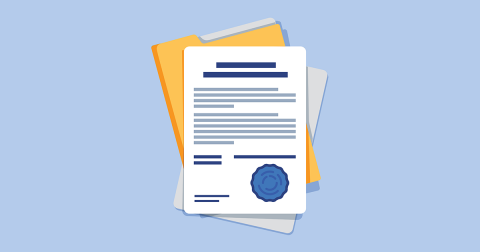Content strategy
Make use of content strategy to deliver great digital experiences.
Content strategy involves planning, creating, delivering, and governing content that meets the needs of its users and achieves an organization’s goals. Content strategy is an essential element of effective digital web services and communication for government agencies.
21st Century IDEA & M-23-22

Content strategy: Essential knowledge
-
An introduction to structured content
Learn how to transform how people find, understand, share, use, and reuse government information.
-
An introduction to trust
Learn how to create websites that people trust.
-
Introduction to translation technology
Learn how and why to use translation technology to create multilingual content.
-
An introduction to plain language
Create communication that is clear and easy to understand for your target audience.
-
Writing for the accessible web
Learn how to write and design web content that is accessible for everyone.
Content strategy events
USWDS Monthly Call - November 2023
USWDS Monthly Call - October 2023
Content strategy news
Rebuilding CDC.gov
Learn how the CDC.gov team used a bold “Clean Slate” approach to reimagine the site and meet real user needs.
Reduce, remove, remediate: PDFs and government websites
In a recent governmentwide community discussion, we shared tips to remediate the use of PDFs on government websites, focusing on balancing needs, choosing formats, starting fixes, and ensuring documents are accessible for everyone.
Designing a multilingual future: A conversation with Laura Godfrey
On the eve of her retirement, Laura Godfrey reflects on multilingualism and equitable access to government information.
Approaching language translations to provide a better user experience: A Login.gov case study
Learn how the Login.gov team improved translations and added a new language to enhance their service.
18F project defaults
18F collaborated on 31 government digital service projects in 2024, including the IRS Direct File Pilot and Notify.gov. To streamline processes, they shared five default templates for other project teams to adopt and improve efficiency and transparency on their own projects. — via 18F

Resources on Content strategy
-
Requirements for delivering a digital-first public experience
Learn how to implement 21st Century IDEA to design and deliver better websites and digital services.
-
An introduction to federal website standards
The federal website standards help agencies provide high-quality, consistent digital experiences for everyone.
-
An advanced approach to accessibility
A deeper look at accessibility: what to do, how to do it, and why it matters.
-
Bilingual Glossaries, Dictionaries, and Style Guides
Multilingual resources to standardize the use of various languages across government.
-
Required web content and links
Various policies require you to have certain content—or provide links to content—from specific places on your website.
-
California wildfires guidance for U.S. government websites and social media
Addressing web and digital communications related to the California wildfires.
-
An introduction to decommissioning sites
Learn how to decommission a federal agency website when it no longer provides value or meets user needs.
-
An introduction to multilingual glossaries
Learn how to use multilingual glossaries to share common translations and contribute to consistent communication across government.
-
Hurricane Helene guidance for U.S. government websites and social media
Addressing web and digital communications related to Hurricane Helene
-
An introduction to working with social media influencers
Learn how to partner with social media influencers and design, implement, and measure an influencer program.
-
An introduction to content
Best practices for creating clear, useful, digital content for federal websites and digital services.
-
An introduction to structured content
Publishing content as modular pieces of information that are tagged with machine-readable descriptions can transform how people find, understand, share, use, and reuse government information.
-
An introduction to trust
Guidance on how to build government websites that people can trust.
-
Introduction to translation technology
What is translation technology? This introductory resource will help you understand how and when to use translation technology to provide meaningful access for people with limited English proficiency.
-
Lessons from the 2021 Federal Plain Language Report Card
This event recap highlights best practices, a short case study video, and examples of federal web content that received both high and low scores in the 2021 Plain Language Report Card.
-
Multilingual Huddle: Designing for Translation
In this webinar, Laura Godfrey and Fedora Braverman share tips for translating content in the digital context.
-
The CDC Clear Communication Index
The CDC Clear Communication Index is a research-based tool to help you develop and assess public communication materials.
-
FY 23 Governmentwide Section 508 Assessment
Report: Assessment of compliance with Section 508 requirements.
-
Moving to .gov
If you’re moving to .gov from another top-level domain, like .com, .org, or .us, here are some best practices to help you plan that transition.
-
PlainLanguage.gov
A resource to help federal employees write in plain language and comply with the Plain Writing Act of 2010.
-
Making the big move: Search in support of federal web modernization
In this special report, we discuss a website redesign’s nine phases and their impact on search.
-
18F De-risking Guides
The Federal Field Guide to De-risk Government Technology offers guidance to federal agencies on how to structure software development teams, write contracts, and oversee agile software activities to reduce risks and improve outcomes for end-users.
-
18F Guide to Product Management
Best practices on doing product management well
-
18F Methods
A collection of tools that describe how teams can put human-centered design into practice.
-
Revised 508 Standards Roadmap
Follow the Revised 508 Standards to ensure your information and communication technology (ICT) is accessible and usable by individuals with disabilities.
-
Style Guides by Government Agencies
This page is a collection of style guides created by government agencies.
-
Guidelines for Improving Digital Services
The Digital Services Advisory Group and the Federal Web Managers Council have developed the following guidelines to meet the 6.1 milestone of the Digital Government Strategy. These recommendations apply to all digital services, including Web, mobile, apps, APIs, and online forms. Guidelines Guideline 1: Digital Strategy Integrate your digital presence into your agency’s overall business, communications, and customer experience strategy Guideline 2: Governance,
-
Tips for Starting Your Customer Experience Journey
Low-cost, low-lift actions that any federal employee can take to improve customer experience.
More News and Events on Content strategy
156 posts
Rebuilding CDC.gov
Learn how the CDC.gov team used a bold “Clean Slate” approach to reimagine the site and meet real user needs.
Reduce, remove, remediate: PDFs and government websites
In a recent governmentwide community discussion, we shared tips to remediate the use of PDFs on government websites, focusing on balancing needs, choosing formats, starting fixes, and ensuring documents are accessible for everyone.
Designing a multilingual future: A conversation with Laura Godfrey
On the eve of her retirement, Laura Godfrey reflects on multilingualism and equitable access to government information.
Approaching language translations to provide a better user experience: A Login.gov case study
Learn how the Login.gov team improved translations and added a new language to enhance their service.
18F project defaults
18F collaborated on 31 government digital service projects in 2024, including the IRS Direct File Pilot and Notify.gov. To streamline processes, they shared five default templates for other project teams to adopt and improve efficiency and transparency on their own projects. — via 18F

Navigating digital acquisitions
Learn the best practices for agile acquisitions—from building and buying solutions, to overcoming common roadblocks.
Publishing federal sales data: how we used design studios and user testing to develop a user-centered dataset
The Open Data, Design, and Development team at the Office of Natural Resource and Revenue (ONRR) successfully added federal sales data to the Natural Resources Revenue Data (NRRD) platform using design studios and user testing to create a user-centered dataset. By involving subject matter experts and refining prototypes through feedback, the team delivered the project ahead of schedule while meeting user needs. Future plans included additional usability testing and expanding stakeholder engagement. — via Office of Natural Resources Revenue

Crafting quality content throughout its lifecycle
Learn about the life cycle of content, how content comes across to the user, and how to develop a content management strategy.
You’ve launched, now what? Planning for the future of your content
Creating quality digital content is not a one-time endeavor. Explore these approaches to managing and improving excellent digital content over time.
Are social media influencers right for your digital media campaign?
Learn how to work with social media influencers to achieve your goals, while accounting for different budgets.
Simplifying manual accessibility testing: How plain language instructions drive compliance
Testing for accessibility ensures that digital services are usable for everyone. Explore how the Office of Natural Resources and Revenue (ONRR) streamlined their manual testing process with plain language instructions to create a more uniform testing methodology across their agency. By balancing detail with usability and continually updating resources, ONRR empowers both their small team and subject matter experts to meet Section 508 compliance. — via Office of Natural Resources Revenue

Delivering a digital-first public experience: One agency’s plan
Learn how the U.S. General Services Administration is tackling the 100+ requirements of OMB memo M-23-22, Delivering a Digital-First Public Experience.
A journey of improvement: Creating a self-assessment for digital experience
Memo M-23-22 from the Office of Management and Budget provides guidance to federal agencies on delivering a digital-first public experience. To quantify its compliance with the memo, the Open Data, Design, and Development team at the Department of the Interior created and conducted a self-assessment of its digital products. The team used a scoring spreadsheet to measure compliance across categories like accessibility, design consistency, and mobile responsiveness. The results helped the team develop a plan to prioritize improvements and engage with leadership for support on other initiatives. — via Office of Natural Resources Revenue

Department of Justice recognizes anniversary of executive order to improve access for people with limited English profiency
The Department of Justice recently marked the 24th anniversary of Executive Order 13166, which aims to improve access to federal services for individuals with limited English proficiency (LEP). Its Civil Rights Division reviewed language access plans across federal agencies, emphasizing progress in hiring and staff training, improving language assistance services, and expanding multilingual content. The department is committed to eliminating language barriers in federal programs, improving communication and access for all communities. — via Department of Justice

Department of Labor, General Services Administration to centralize government benefits information on USA.gov and USAGov en Español
In September 2024, Benefits.gov will be discontinued, with its services and information moved to USA.gov and USAGov en Español. This change, which aligns with Executive Order 14058: Transforming Federal Customer Experience and Service Delivery to Rebuild Trust in Government, aims to create a seamless, user-friendly experience for accessing government benefits in both English and Spanish. The new platform, with a focus on equitable access to information, will feature improved navigation and benefit-finding tools. — via General Services Administration

Reassessing priorities: Adapting to additional work without additional resources
The Office of Natural Resources Revenue’s Open Data, Design, and Development (ODD) team is taking on management of a fourth website, despite being short-staffed. As a result, they have revisited and reprioritized their yearly goals. To do so, they utilized a prioritization matrix, developed a structured impact assessment, and laid out a transition plan. Their process ensured realistic workload adjustments, improved team morale, and highlighted the importance of practical goal-setting, especially when teams are short-staffed. — via Office of Natural Resources Revenue

Designing for people with disabilities
The User Experience (UX) team at USA.gov’s Public Experience Portfolio recently conducted a study to analyze the experiences of individuals who access USA.gov through assistive technology. The team partnered with a local organization to gather insights from a diverse group of participants, many of whom are blind or deaf. The study revealed various habits and challenges faced by these users, such as a preference for mobile sites, difficulty with website carousels, and a reliance on clear headings and action-oriented descriptions. These findings can guide improvements in accessibility, such as clever link labeling and better navigation aids for assistive technology users. — via USA.gov

Introducing the Department of Homeland Security customer experience toolkit
The Department of Homeland Security’s Customer Experience Directorate developed a customer experience (CX) toolkit to help agencies implement CX strategies using a human-centered design approach. The toolkit offers resources to enhance service delivery, processes, and systems, following a “Ready, Set, Grow” framework for planning and implementation. It aims to serve as a reference for organizations bringing CX practices to their own agencies. — via Department of Homeland Security

Bridge the gap between policy and implementation: Impactful solutions and strategies for success from Digital.gov’s spring 2024 summit
The summit highlighted digital transformation, emphasizing the significance of recent OMB memos for improving accessibility and customer experience.
Digital front door: Expanding access to VA
More Veterans are turning to the U.S. Department of Veterans Affairs (VA) for healthcare and benefits, accessing these services online through tools like the VA Health and Benefits mobile app and VA.gov. With over 2.28 million app downloads and 17.8 million monthly visitors on VA.gov, these digital tools provide faster, easier, and more inclusive access to VA services. Learn more about how these technologies are often Veterans’ first interaction with VA by watching their latest video, Digital Front Door: Expanding Access to VA. — via U.S. Department of Veterans Affairs





















